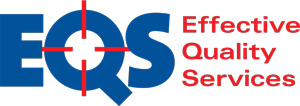In today’s competitive manufacturing environment, success depends not just on producing goods efficiently but on producing them consistently with the highest standards. Building a strong quality culture in manufacturing ensures that excellence becomes part of daily operations, not just a checklist item for audits or certifications.
This article explores how companies can create a lasting culture of quality, why continuous improvement training is essential, and what role ISO certification plays in shaping workplace culture.
Why Culture Matters in Manufacturing
Culture is the shared mindset, values, and behaviors that guide employees in their daily work. In manufacturing, a quality culture means that employees at every level—from leadership to frontline operators—embrace accountability for quality. Instead of treating defects or nonconformities as isolated problems, teams see them as opportunities to improve processes and reduce risk.
A strong quality culture does more than prevent mistakes. It drives customer satisfaction, boosts efficiency, and reduces costs linked to rework, waste, and recalls. According to Deloitte’s 2023 manufacturing outlook, companies that integrate quality and continuous improvement into their culture report higher resilience and faster recovery from supply chain disruptions.
How Do You Build a Culture of Quality in Manufacturing?
- Leadership Commitment
Culture begins at the top. Executives and managers must consistently demonstrate that quality is a priority, not just a compliance requirement. When leaders model behaviors such as transparency, accountability, and a willingness to address root causes, employees are more likely to follow. - Clear Quality Policies and Objectives
Written policies and measurable objectives set expectations across the organization. Quality goals should align with company strategy and be communicated in plain language, so employees understand how their daily work contributes to broader success. - Continuous Improvement Practices
Tools such as Kaizen, Six Sigma, and Lean manufacturing are valuable, but they are only effective if used regularly. Embedding continuous improvement into daily routines ensures that small, incremental changes lead to long-term gains. - Employee Engagement in Quality
Employees are more likely to support quality systems when they feel their input matters. Encouraging workers to participate in problem-solving teams, share observations, and suggest improvements fosters ownership of outcomes. - Open Communication
Quality issues must be reported quickly and without fear of retaliation. A “no-blame” environment encourages transparency, ensuring problems are addressed before they escalate.
Why Is Employee Training Important for Quality Systems?
Continuous improvement training equips employees with the knowledge and skills to identify problems, suggest solutions, and implement corrective actions. Training should be practical, hands-on, and ongoing.
Key elements include:
- Orientation and Onboarding: New employees should learn quality expectations from day one.
- Refresher Programs: Regular training keeps standards current and reinforces best practices.
- Role-Specific Skills: Operators, supervisors, and managers need training tailored to their responsibilities.
- Problem-Solving Techniques: Tools such as root cause analysis, Pareto charts, and process mapping empower employees to address issues effectively.
Research from the American Society for Quality (2023) shows that organizations with comprehensive training programs report 20% fewer nonconformities compared to those with limited training. This highlights training as a direct driver of quality outcomes.
The Role of ISO Certification in Workplace Culture
ISO standards provide structured frameworks that guide companies toward consistent performance. An ISO-driven quality culture is not about meeting minimum requirements; it is about embedding international best practices into everyday operations.
- ISO 9001 sets the foundation by emphasizing customer focus, leadership, process approach, and continuous improvement.
- ISO 13485 for medical devices and AS9100 for aerospace extend these principles to industries where safety and compliance are critical.
Certification processes require thorough documentation, internal audits, and management reviews. More importantly, they instill discipline and accountability across the organization. When companies adopt ISO frameworks, employees learn that quality is not optional—it is essential to their role and to the organization’s reputation.
According to ISO’s 2023 survey, more than 1.2 million companies worldwide maintain ISO 9001 certification, reflecting its global importance. Companies that leverage certification as part of their culture see not only compliance benefits but also measurable improvements in customer trust and operational performance.
Overcoming Challenges in Building a Quality Culture
Creating a sustainable quality culture is not without obstacles. Some common challenges include:
- Resistance to Change: Employees may be comfortable with existing processes. Overcoming resistance requires strong communication and showing the value of new practices.
- Short-Term Focus: Companies that prioritize speed or cost-cutting over quality risk long-term setbacks such as recalls or reputational damage.
- Siloed Departments: Quality cannot be isolated within one department. Collaboration across operations, engineering, supply chain, and leadership is critical.
By addressing these challenges directly, companies can strengthen their systems and avoid setbacks that undermine cultural progress.
How to Sustain Quality Culture Long-Term
- Measure and Share Results
Use metrics such as defect rates, customer complaints, and audit findings to track progress. Sharing results with employees reinforces accountability and celebrates success. - Reward and Recognize Employees
Recognizing employees for their contributions to quality reinforces positive behavior and demonstrates leadership’s commitment. - Integrate Technology
Digital tools for data collection, audit tracking, and real-time monitoring help companies maintain compliance and respond quickly to issues. - Link Culture to Strategy
Quality should be woven into corporate strategy, not treated as a separate initiative. When tied to growth, innovation, and customer satisfaction, it becomes integral to long-term success.
Building a culture of quality in U.S. manufacturing is not achieved overnight. It requires leadership commitment, employee engagement in quality, effective training, and the discipline provided by ISO standards. Companies that succeed in embedding quality into their culture benefit from stronger customer relationships, reduced waste, and greater resilience in a competitive marketplace.
Effective Quality Services helps organizations build sustainable quality culture in manufacturing, implement continuous improvement training, and leverage ISO certification to strengthen workplace culture.
Contact us to get started on creating a culture of quality that drives results and safeguards your reputation.

